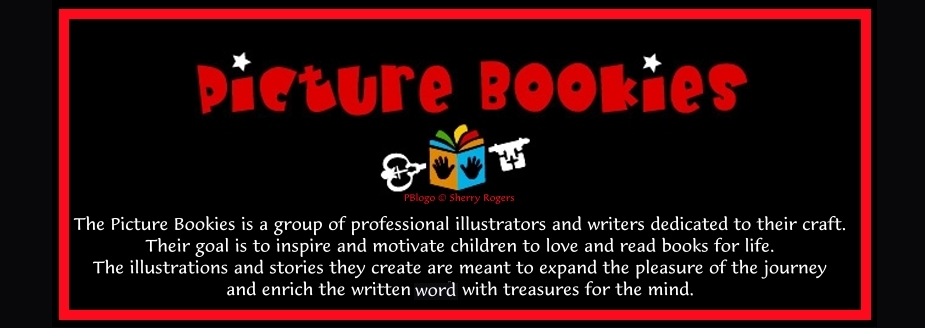
This was an article I originally wrote for the "Prairie Wind", the SCBWI-IL e-newsletter. I thought maybe it would be helpful to some visitors to our blog.
By Kathleen Rietz
As freelance illustrators, we’ve all been there before - those times when assignments stop trickling in and we find ourselves lying awake in our beds at night and wondering how we will pay next month’s bills. Sometimes these professional dry spells cause us to question what we may have done wrong. And if enough time passes, we may even begin to doubt our own talents as illustrators. Usually though, dry spells last a short amount of time and new assignments bring us a new sense of security - and coincidentally - restore our sleep.
I know first-hand how difficult it can be to coast through a professional dry spell and survive, because I went through a dry spell that lasted nearly two years. I won’t lie - relying on an income solely through freelance work is not for the faint of heart. But if you use your time wisely, you can come out of a professional dry spell with a redefined sense of purpose and a clearer identity as an illustrator. I would even argue that dry spells are important and necessary if we choose to use our time wisely. For me, those 2 dry years turned out to be a time of immense growth as a children’s book illustrator.
I have compiled a list of suggestions for surviving a professional dry spell. Many of these I tried myself. Others are things I still plan to do the next time work slows for me.
• Conduct a class or demo. Art stores, such as Blick Art Materials, are often open to artists who are interested in teaching anything from a 6-week course to a 1-day workshop. This can be a quick way to earn some cash while promoting yourself as an artist. It’s also a great way to meet and network with other artists in your community. Store managers like it because it draws customers who are inclined to purchase art supplies.
• Get current. Take a computer arts class. Even for traditional illustrators, Adobe Photoshop and Illustrator skills are almost a must-have. Even if you pride yourself on being “old-school”, many clients now expect artists to submit illustration jobs in digital format. You may also want to take a class to learn how to build your own website. If you can’t afford a class at your local community college, Lynda.com offers $25 monthly subscriptions to online tutorials you can complete at your own pace.
• Experiment. Always wanted to try acrylics, gouache or collage art? Now’s your time to shine. Something you try might end up redefining your entire purpose as an illustrator. You can even find online demos and artist groups devoted to a specific medium. In my case, I wanted to get back to using acrylic paints, which I had in storage for years. Before taking them out for a try, I contacted an illustrator whose acrylic work I admired and asked her about her technique. She was more than happy to share her technique with me. I am now using acrylic paint to illustrate a new children’s picture book assignment.
• Update your database. Social sites for illustrators and writers, such as Jacketflap.com, can offer a wealth of information to aid you in compiling a database of publishers whom you may want to contact for future illustration work. The site contains information such as a publisher’s most recent books, news, imprints, what type of books they publish each year and how many. Other sources for compiling your database are the SCBWI Bulletin, and an annual publication titled “Children’s Writer’s & Illustrator’s Market”. New copies sell for about $25, but you may be able to cut costs by checking one out at your local library.
• Revamp your portfolio. Now’s the time to be honest with yourself. Easier said than done. Sometimes we as illustrators want to include every fabulous illustration we have ever done. We lose focus of our portfolio as a whole. In that case, attending a group critique such as a local SCBWI chapter meeting can be helpful. Personally, I also found it very helpful to contact some artist agents and request feedback from them about my work and my portfolio. While each agent’s advice differed to some extent, there were a few comments made to me by each agent that remained consistent. It was these key comments that really helped me to cull my body of illustration work and focus on creating some new illustrations that gave my portfolio a much stronger sense of unity.
• Create a new promo mailing. Now that you have updated your database and created some new pieces for your portfolio, it’s time to design a new mailing to send to editors and art directors at publishing houses. Be sure that whatever illustration you decide to showcase on your mailing represents your portfolio and your purpose as an artist. Remember, you are trying to convince very busy editors and art directors to stop what they are doing and look at your website or online portfolio, so choose your illustration wisely. I find postcard mailings are best. Both VistaPrint.com and Overnightprints.com run lots of sales, and I have been very satisfied with the quality, color, and sharpness of the postcards I have ordered. Plus, you can actually see what the postcard you design will look like before you place your order.
Although no one enjoys not having a constant influx of assignments, an occasional dry spell can a time of renewal for any illustrator willing to learn to be resourceful and honor the ebb and flow common to the freelance lifestyle.
.jpg)
















